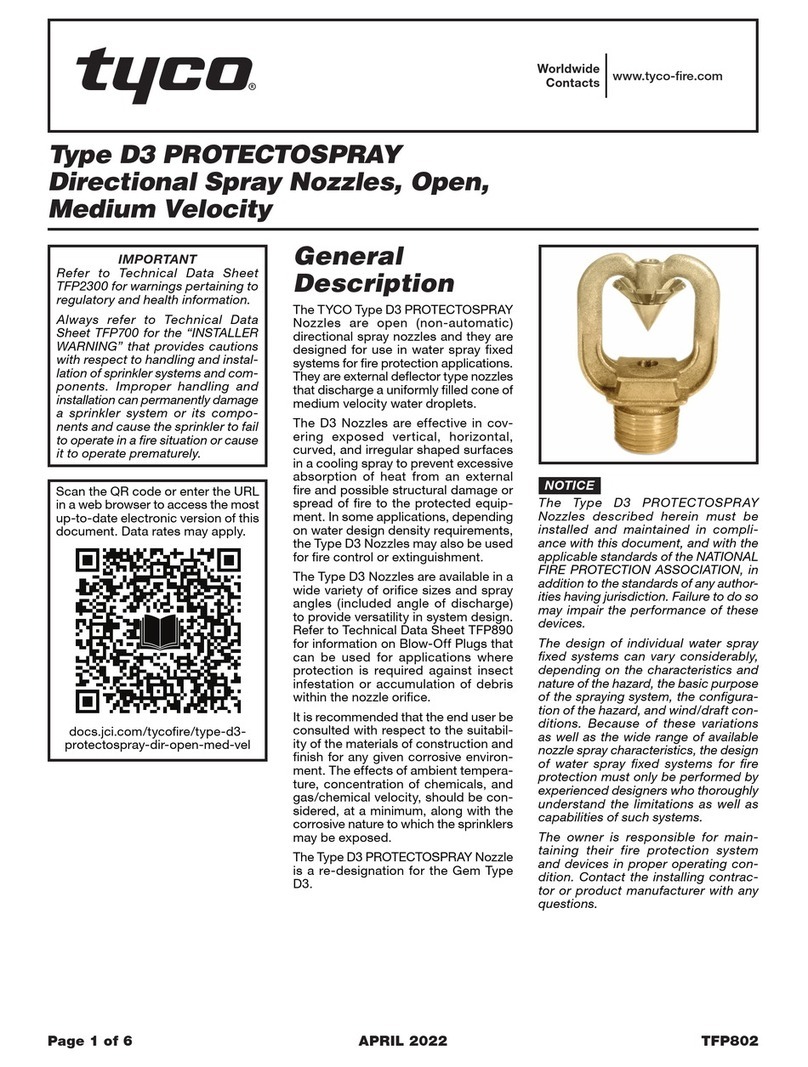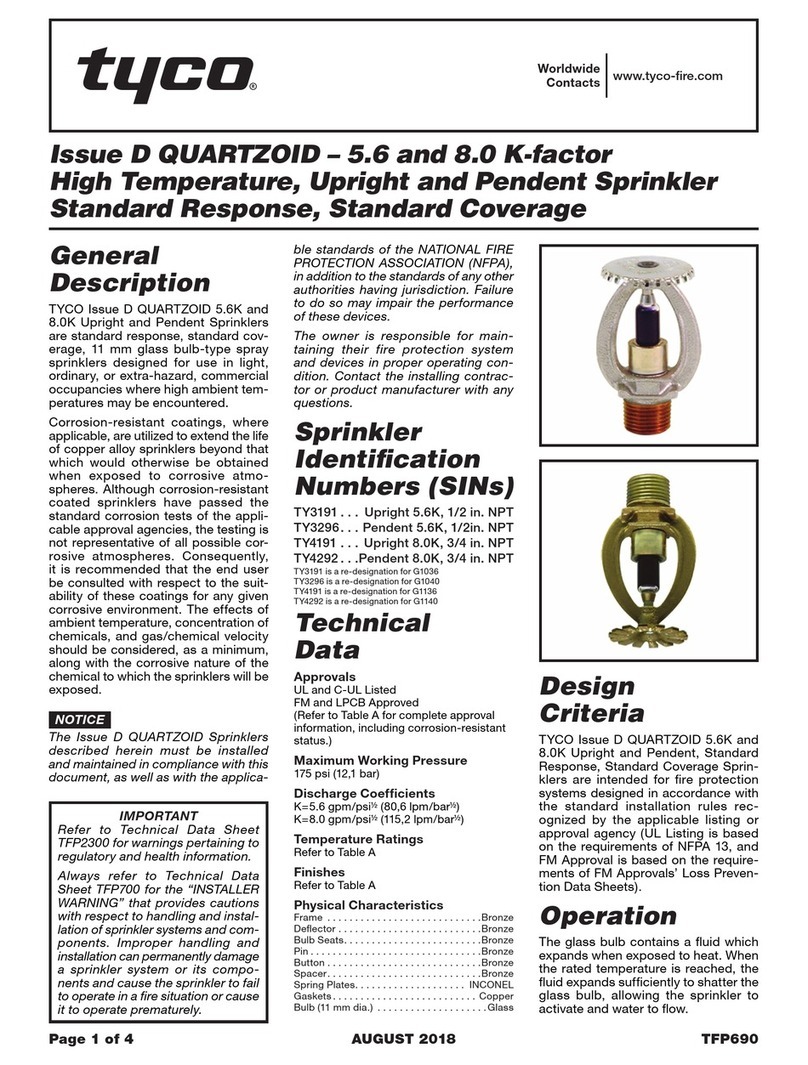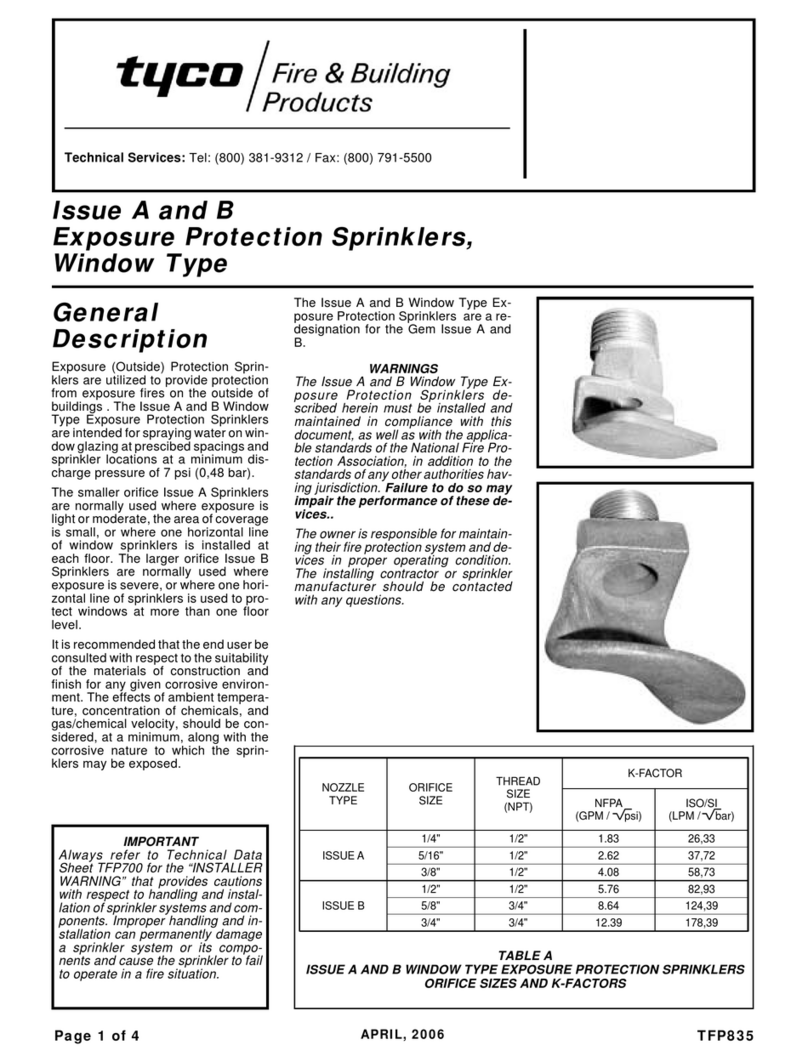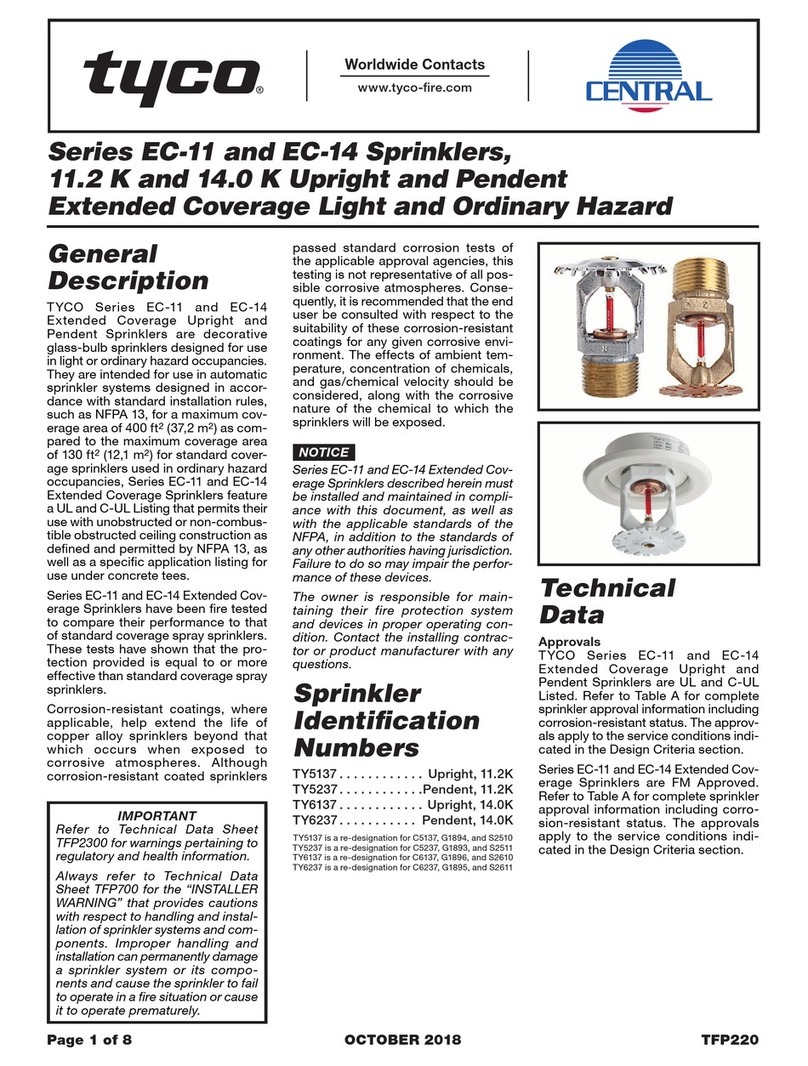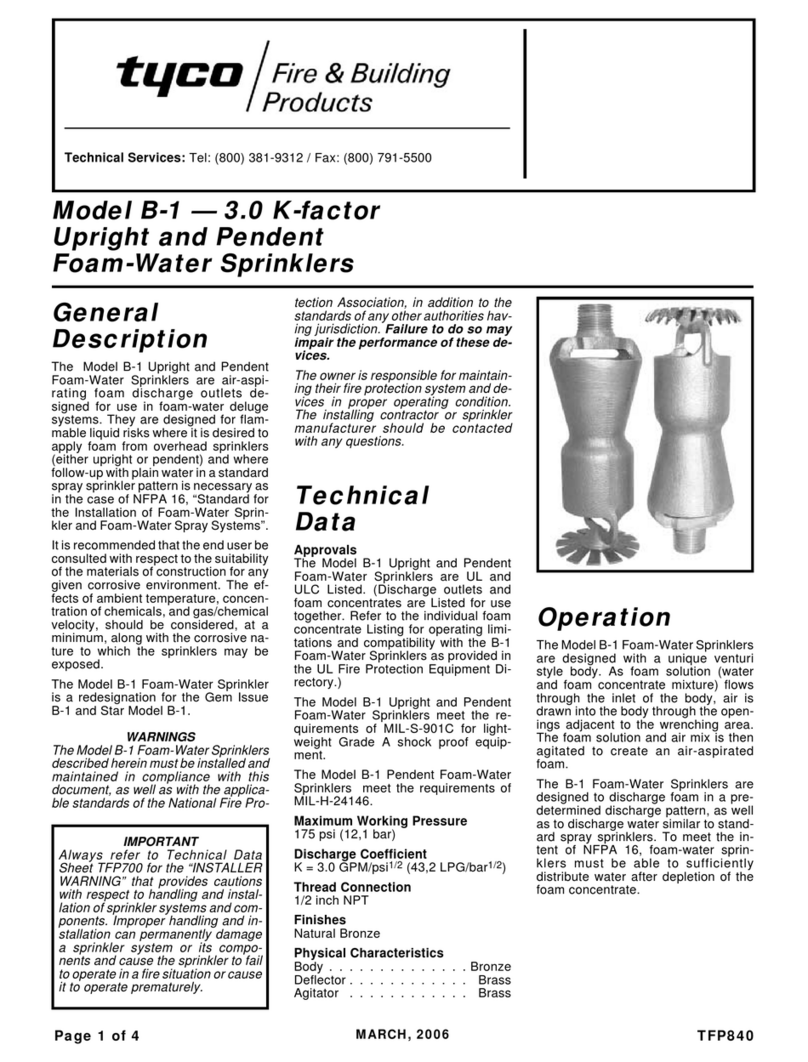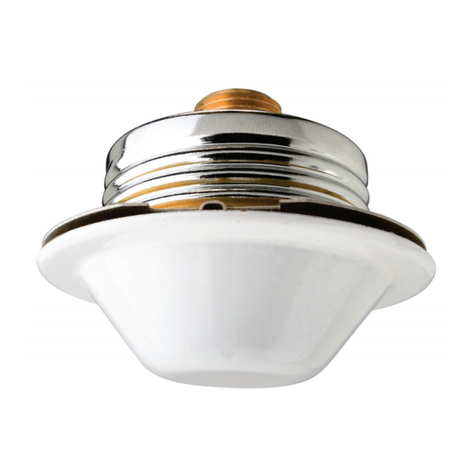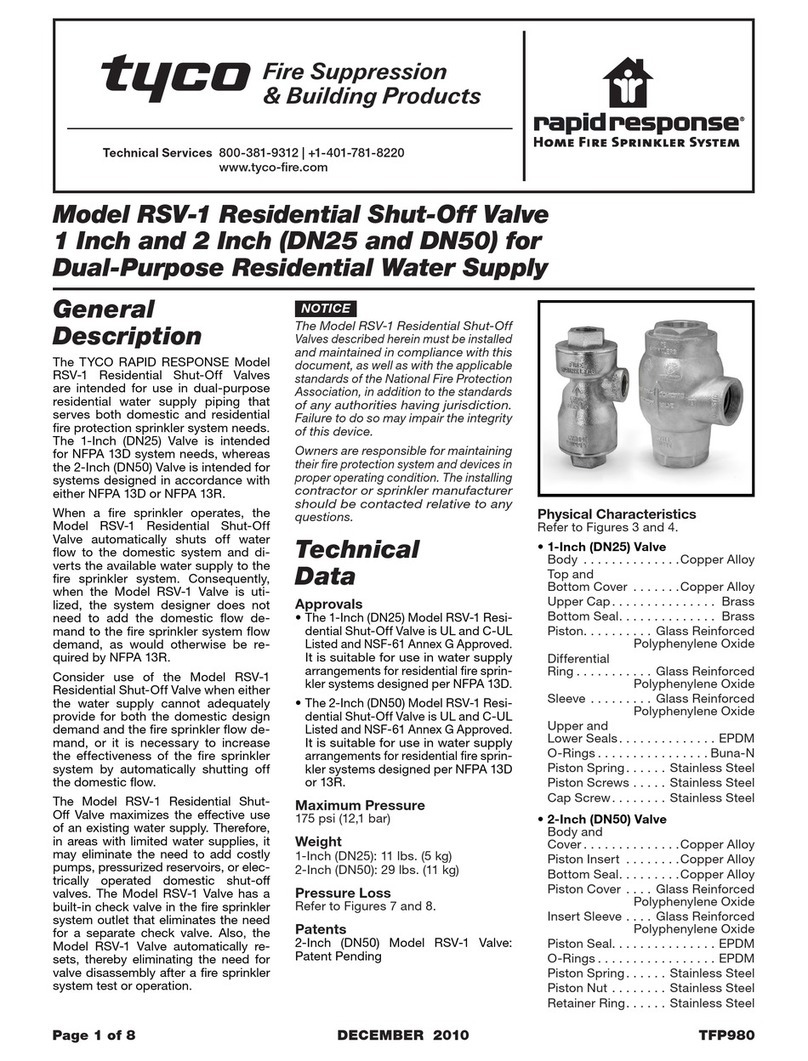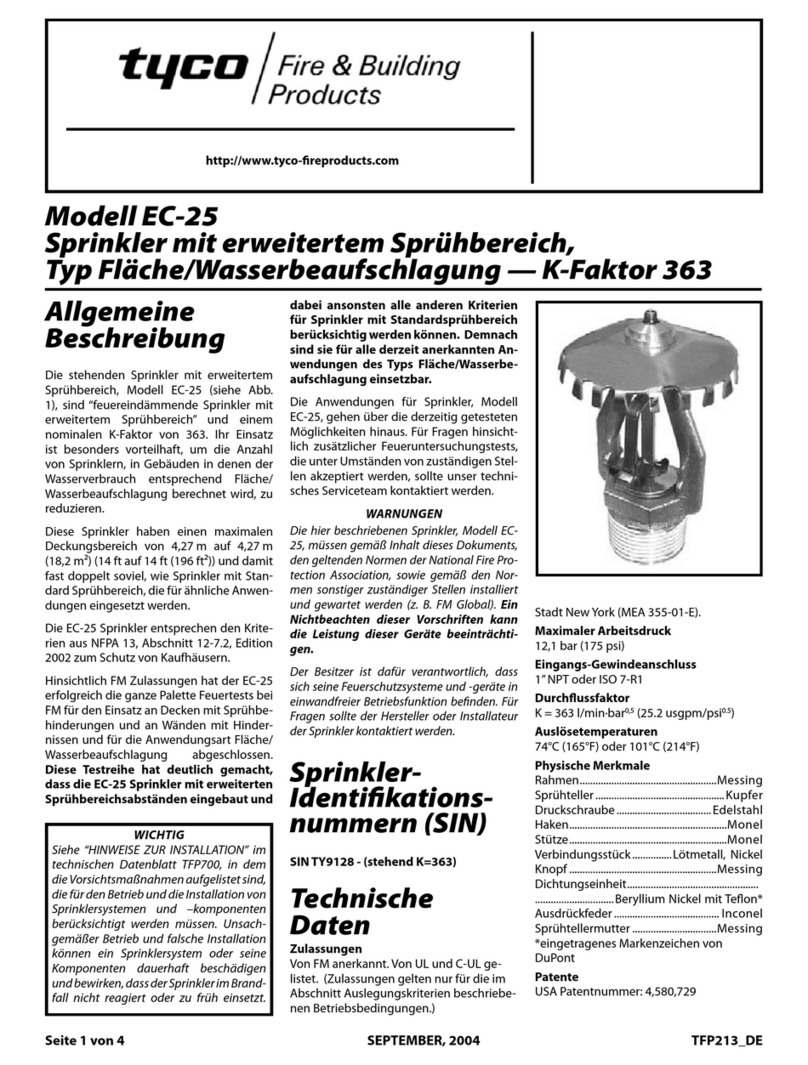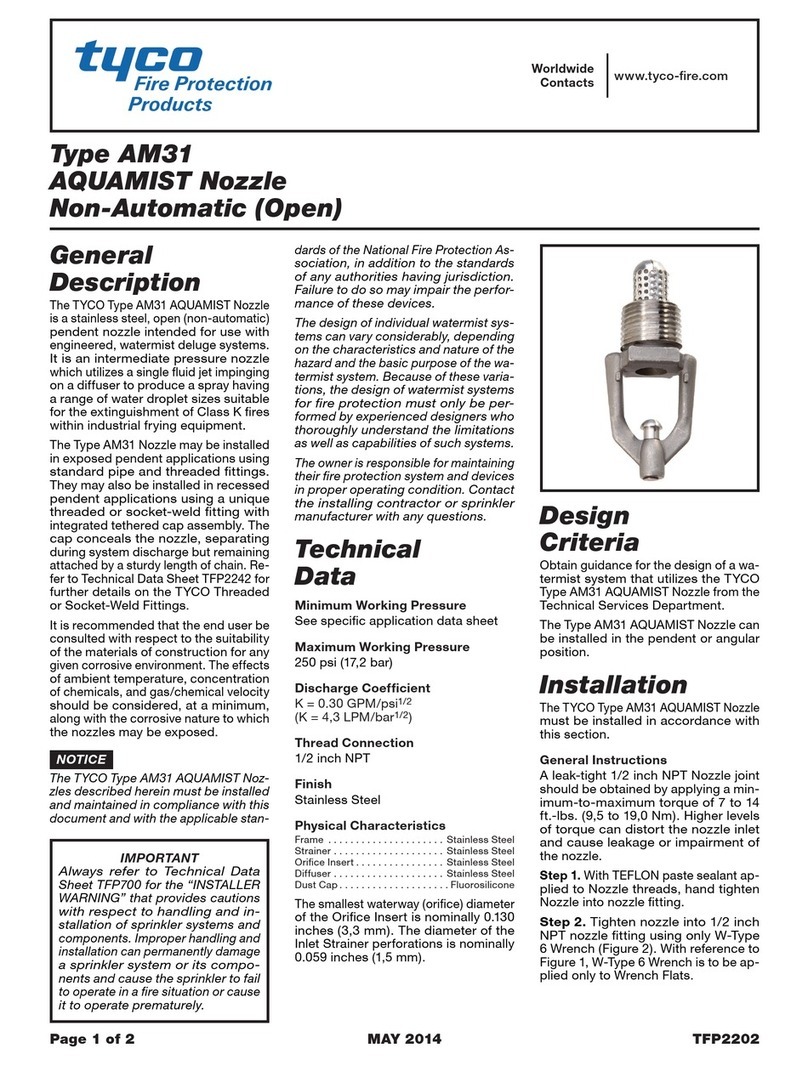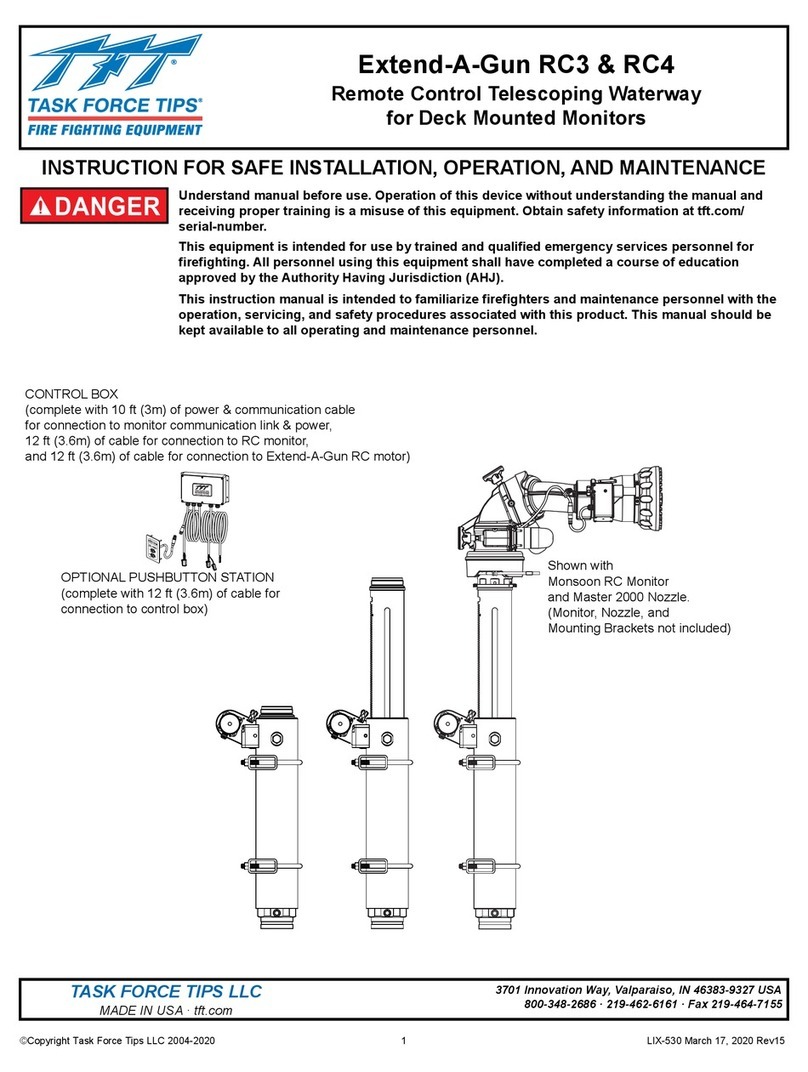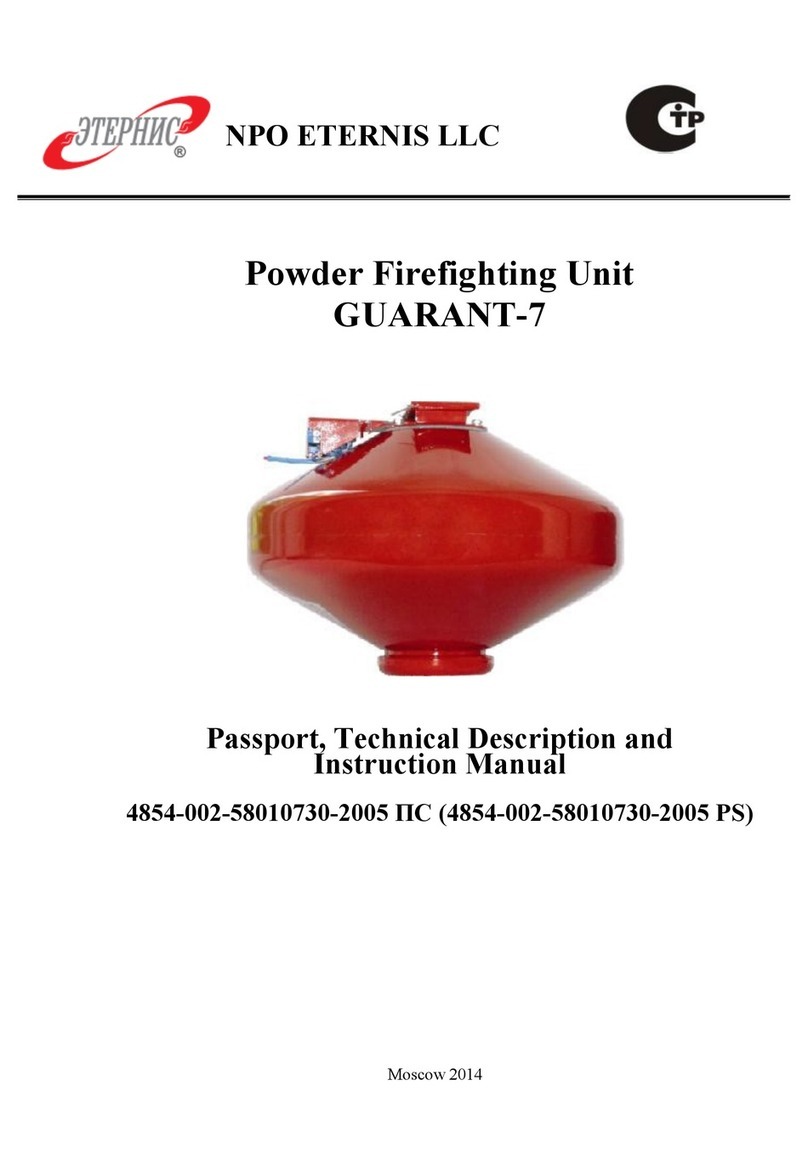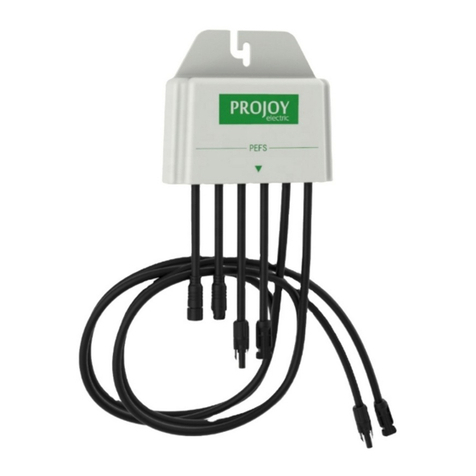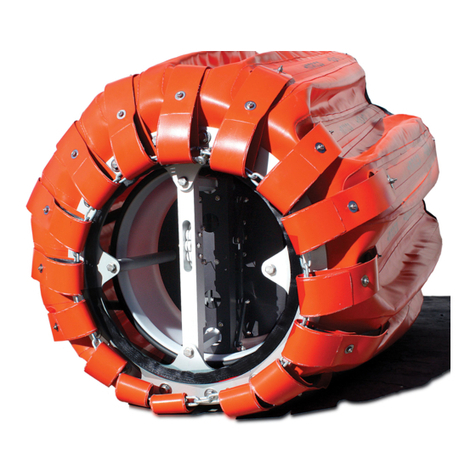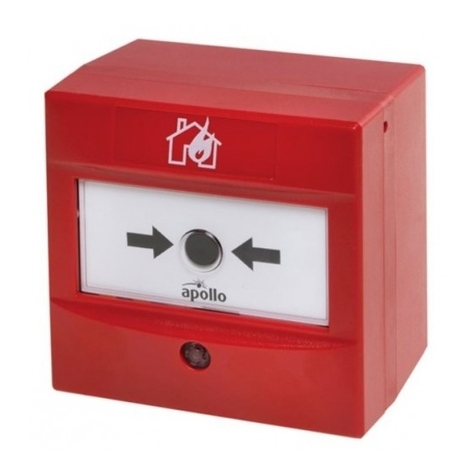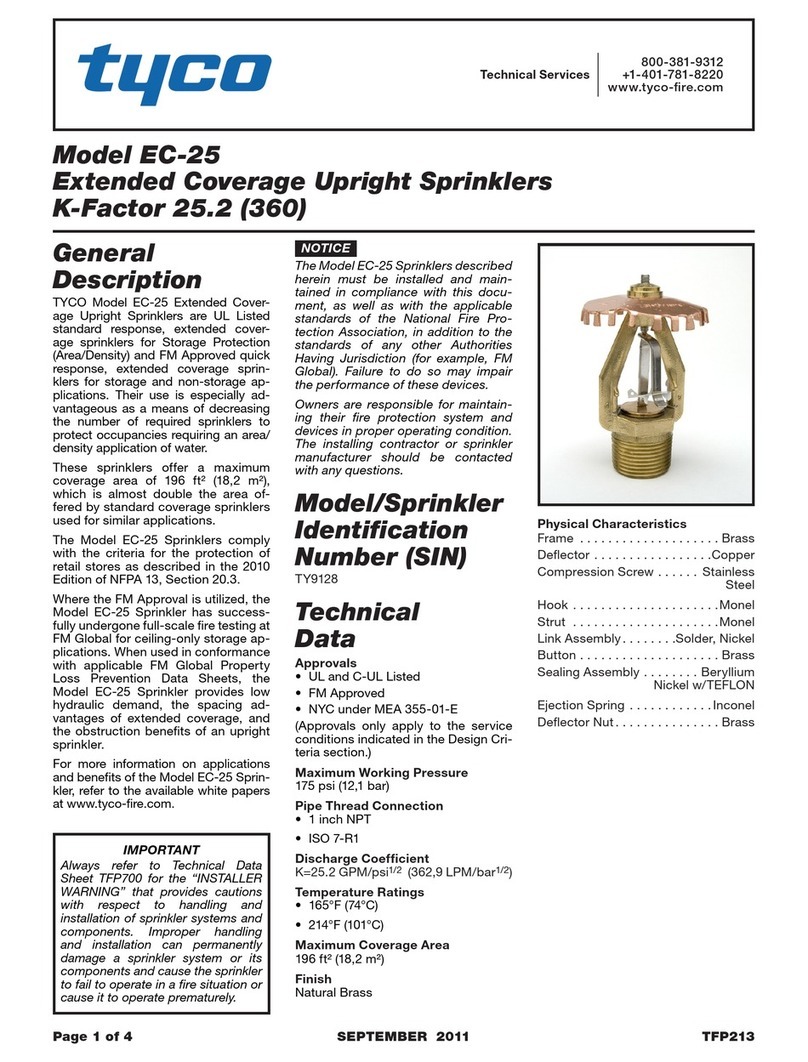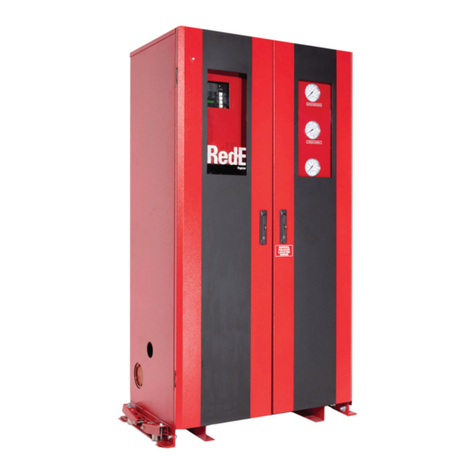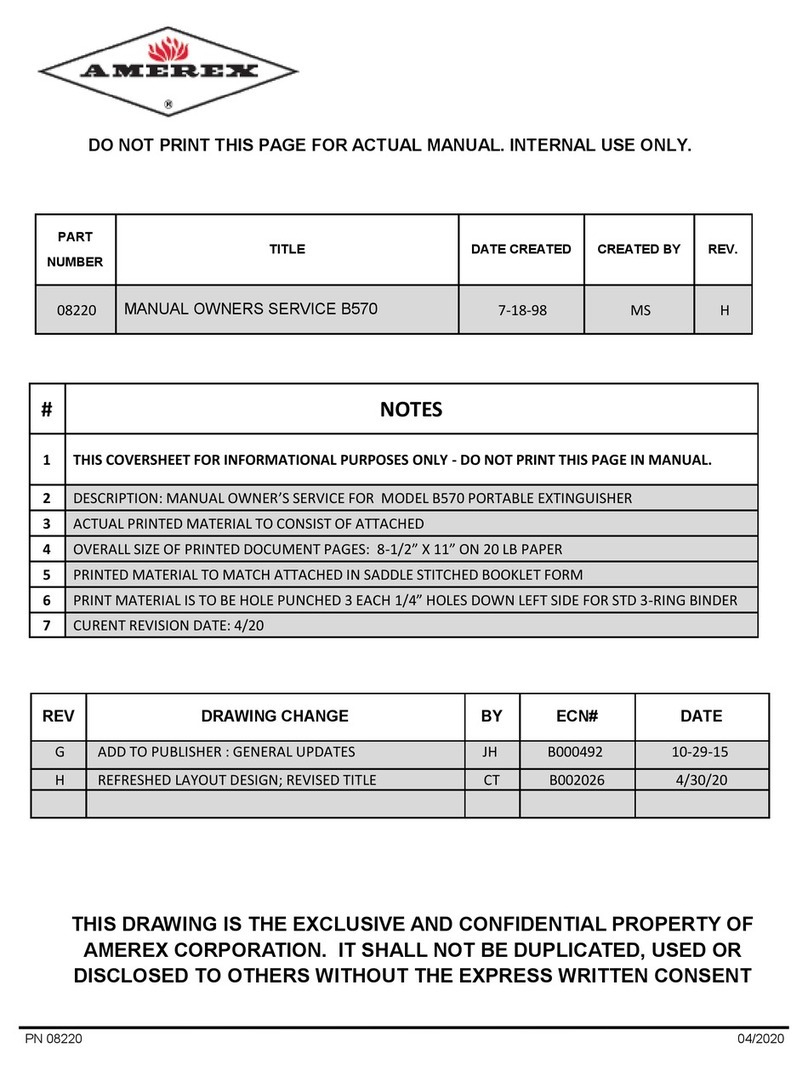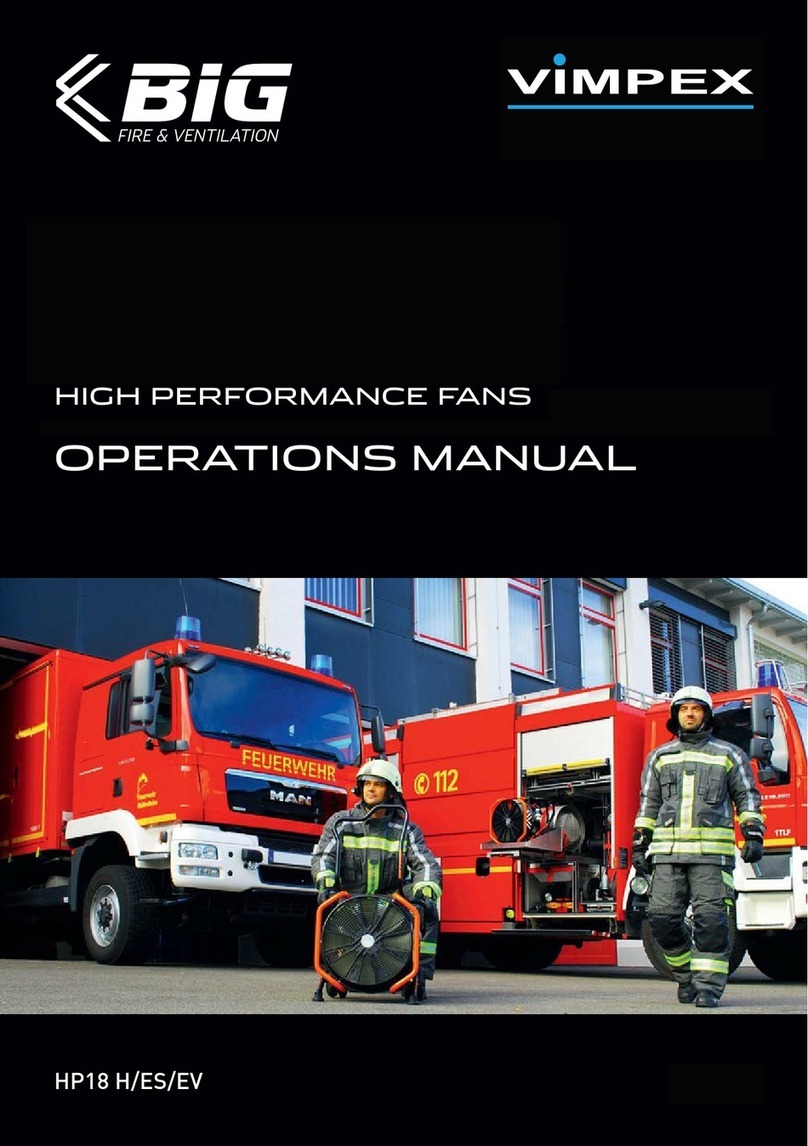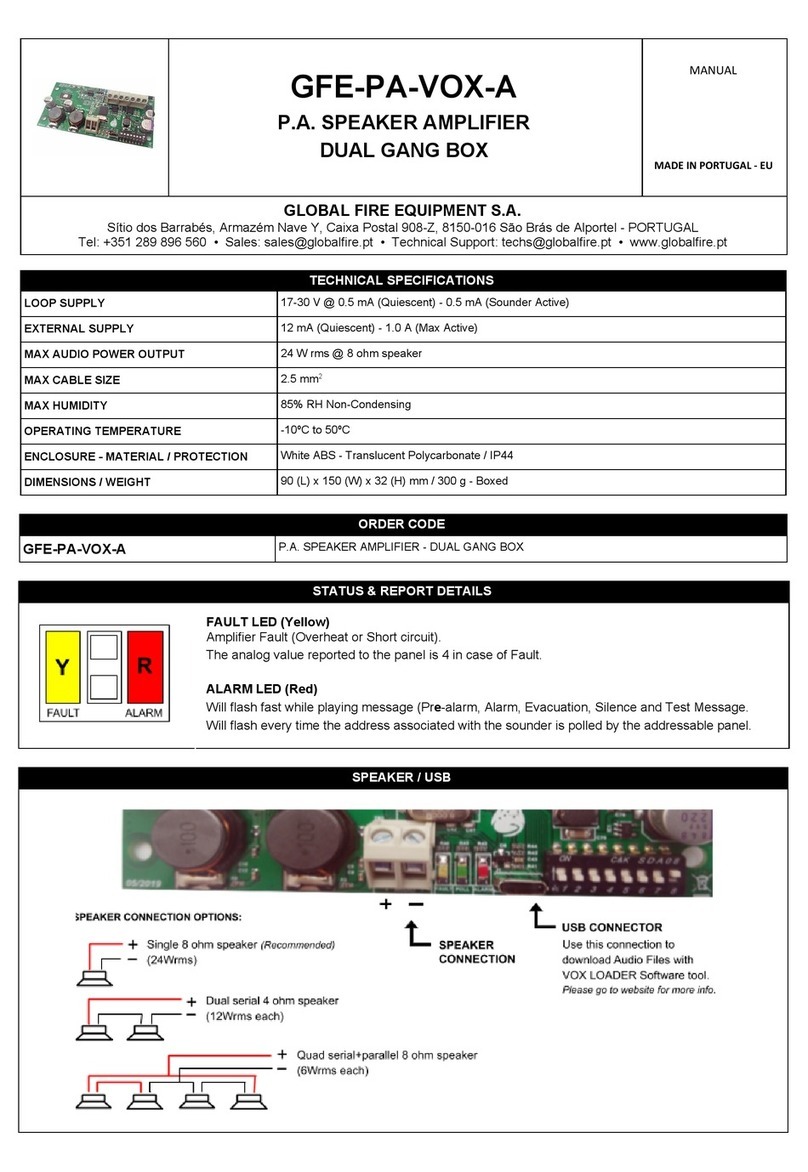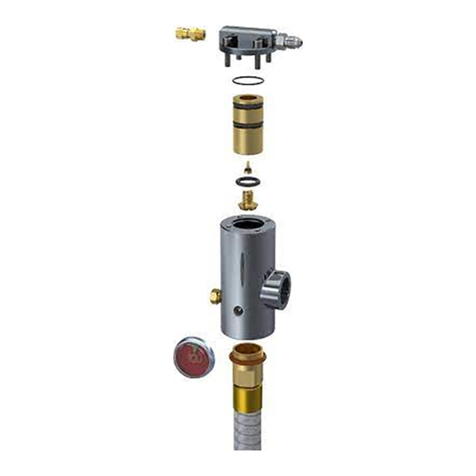
TFP800
Page 3 of 6
Operation
The glass bulb contains a uid that ex-
pands when exposed to heat. When the
rated temperature is reached, the uid
expands sufciently to shatter the glass
bulb, allowing the nozzle to activate and
water to ow.
Design
Criteria
Nozzle Placement.
Where direct impingement of water
spray onto all of the protected surface
is required by the Authority Having Ju-
risdiction, the nozzles are to be spaced
and directed so that their spray pat-
terns will completely cover the plane-
of-protection with the minimum re-
quired average density. However, it is
recommended that indoor nozzle spac-
ing be 12 feet (3,7 m) or less and that
outdoor nozzle spacing be 10 feet (3,0
m) or less. Where rundown or slippage
is planned, for example, exposure pro-
tection of vessels per NFPA 15, the
above recommended indoor and out-
door spacings also apply.
When used for protecting the surfaces
of a vessel, for example, the nozzles are
positioned normal to and approximate-
ly 2 feet (0,6 m) from the surface. This
approach, in conjunction with a prop-
erly selected spray angle, will tend to
make more effective use of the spray as
well as help minimize the disturbance
effects of wind/draft conditions on the
water spray patterns.
Spray Patterns.
The Design Spray Proles for the noz-
zle spray angles of 65 to 180 degrees
are shown in Figure 2 and apply to dis-
charge pressures of 20 to 60 psi (1,4
to 4,1 bar). Discharge pressures in ex-
cess of 60 psi (4,1 bar) will result in a
decrease in coverage area because the
spray patterns tend to draw inwards at
higher pressures. Refer inquiries on
higher discharge pressures to the Tech-
nical Services Department.
The maximum axial distances between
the nozzle tip and plane-of-protection,
for exposure protection, are given in
Table E and F. When the axial distance
from the nozzle tip to the plane-of-pro-
tection is 3 feet (0,6 m) or less, the De-
sign Spray Prole is the same as the
nominal spray angles of 65 thru 140
degrees.
Heat Sensitivity.
Because the Type EA-1 PROTECTO-
SPRAY Nozzles are automatic nozzles,
they must be located with consider-
ation of their ability to detect abnor-
mal temperature increases due to re.
Therefore, it is recommended that
NFPA 13 be reviewed with respect to
the rules that dene the permitted dis-
tance below ceilings and the spacing
limitations for standard coverage auto-
matic sprinklers as a function of occu-
pancy hazard.
Main Pipeline Strainers.
Main pipeline strainers per NFPA 15 are
required for systems utilizing nozzles
with a ow path less than 3/8 inch (9,5
mm) diameter, that is, K=1.4 and K=2.8
(Table A), and for any system where the
water is likely to contain obstructive
material.
5. The maximum Axial Distances shown in Tables E and F are based on exposure
protection.
4. For axial distances of 2 feet (0,6 meters) and less and for nozzle spray angles of 65° to
140°, the Design Spray Prole is the same as the nominal spray angle.
RADIAL
DISTANCE
NOTES:
1.
2.
Design data obtained from tests in still air.
Design data applies to a residual (owing) pressure range at the nozzle inlet of 20 to 60
Products Technical Services.
psi (1,4 to 4,1 bar). For pressures up to 175 psi (12,1 bar) consult Tyco Fire & Building
3.
Refer to the authority having jurisdiction for their minimum required residual pressures.
The shapes of the Design Spray Proles remain essentially unchanged over the
maximum Axial Distances shown in Tables E and F.
GRAVITY
FIXED ANGLE
(ORIENTATION)
SPRAY
PROFILE PROTECTION
PLANE OF
NOZZLE
AXIAL DISTANCE
FIGURe 2
WATeR DISTRIBUTION DeSIGN DATA
95°
65°
80°
110°
125°
140°
160°
180°
0
16
14
12
10
8
6
4
2
0
2 4 6 8
RADIAL DISTANCE FROM
NOZZLE CENTERLINE, FEET
AXIAL DISTANCE FROM NOZZLE, FEET
125°
140°
160°
95°
80°
110°
65°
180°
AXIAL DISTANCE FROM NOZZLE, METRES
RADIAL DISTANCE FROM
NOZZLE CENTERLINE, METERS
2,52,01,51,00,50
4,5
4,0
3,5
3,0
2,5
2,0
1,5
1,0
0
0,5
